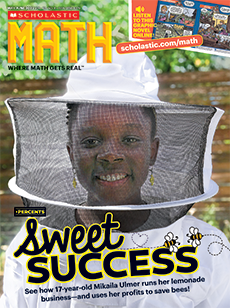Darkness falls on Halloween night. Strange sounds are coming from the abandoned house next door. Against your better judgment, you decide to go investigate. As you brush the cobwebs off the doorknob, you feel your heart start pounding. You slowly open the door, and out flies your worst nightmare: a giant cloud of flapping, screeching, bloodsucking vampire bats!
Sound familiar? Spooky scenes like this are common in movies and TV shows, and they’re what many people imagine when they think about bats. But this perception isn’t very realistic, according to Kristen Lear. Most bats are harmless, she says—and humans are a bigger threat to them than they are to us.
Lear is a scientist at Bat Conservation International, an organization based in Austin, Texas. She and her colleagues work to protect endangered bats all around the world. “They’re one of those animals that people shy away from,” she says. “But that air of mystery is what really draws me in.”
Darkness falls on Halloween night. Strange sounds are coming from the abandoned house next door. As you step closer, your heart starts pounding. You open the door, and out flies your worst nightmare. It’s a giant cloud of screeching vampire bats!
Sound familiar? Spooky scenes like this are common in movies and TV shows. They’re what many people imagine when they think about bats. But they aren’t realistic, says Kristen Lear. Most bats are harmless, she says. In fact, humans are a bigger threat to them than they are to us.
Lear is a scientist at Bat Conservation International in Austin, Texas. The organization works to protect endangered bats all around the world. “They’re one of those animals that people shy away from,” says Lear. “But that air of mystery is what really draws me in.”
